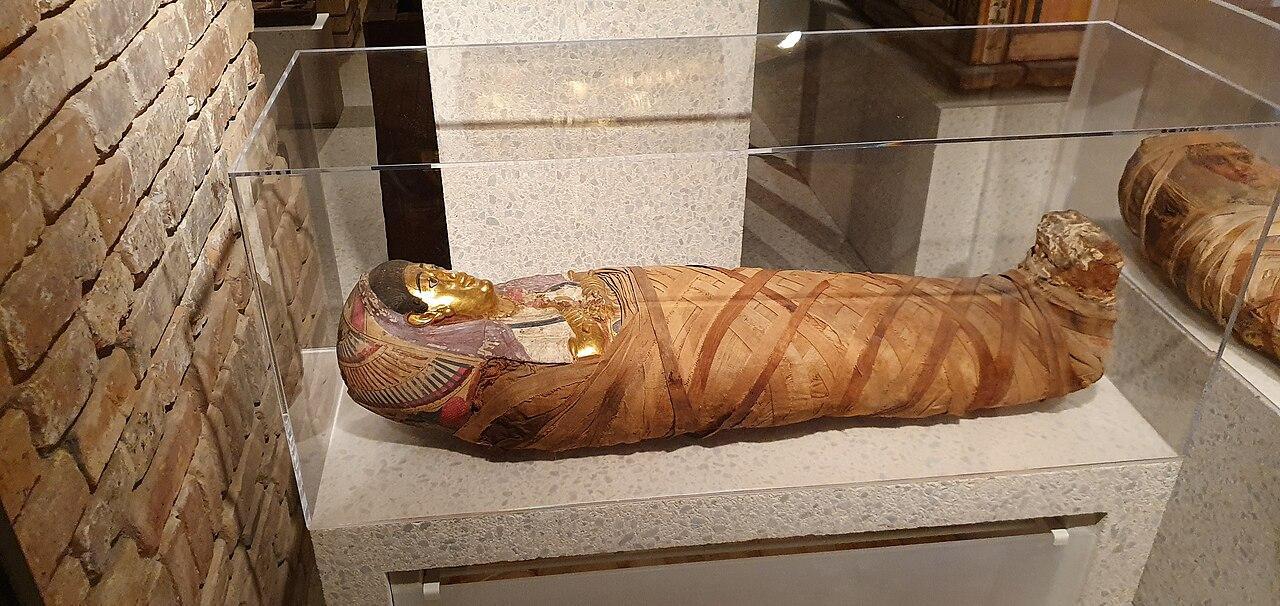Scientists Reveal Fragrant Aroma of Ancient Mummy: ‘The Scent of Eternity’
Scientists have uncovered the mystery behind an ancient aromatic recipe used to preserve a noblewoman from Egypt who was meticulously mummified over 3,000 years ago.
The researchers used modern chemical analysis techniques, which enabled them to detect the individual substances used in what they refer to as “the scent of eternity,” allowing them to discern what ingredients were used during the woman’s mummification process.
Egypt's Contributions to Society
Ancient Egypt is celebrated for its beautiful architecture, long, prosperous history, and many contributions to modern civilization, including advancements in medicine, engineering, agriculture, architecture, and fermentation.

Source: Wikimedia
However, other aspects of their culture fell out of favor as time passed, including the process of mummification, which was an integral part of the Egyptian way of life.
The Mummification Process
Regarded as a sacred process, mummification was as much an art form as it was a burial practice in Ancient Egypt. Researchers have gained some insight into the holy practice thanks to a plethora of artifacts left behind, according to the Smithsonian Institution.

Source: Wikimedia
However, for all the hieroglyphs and information left behind by the Egyptians during their 4,000-year history, they rarely spoke about the embalming process of mummification, especially as far as individual recipes are concerned.
Researchers Discover Unique Ingredients Contained Within Canopic Jars
Thanks to advancements in chemical analysis technology, researchers may soon gain a better understanding of the recipes and specific ingredients used during the sacred process.

Source: Wikimedia
According to The Guardian, a group of researchers recently used this process to identify several individual substances from balm residue coated within the canopic jars of a noblewoman named Senetnay, who lived during the 18th dynasty.
The Scent of Eternity
Barbara Huber, an archaeologist from Germany’s Max Planck Institute of Geoanthropology, explained the find’s importance: “The scent of eternity represents more than just the aroma of the mummification process.”

Source: Wikimedia
She continued, “It embodies the rich cultural, historical, and spiritual significance of Ancient Egyptian mortuary practices.”
The History of Senetnay
Senetnay served as the wet nurse to the revered Amenhotep II, the seventh pharaoh of the 18th Dynasty of Egypt. Her elite status during the era is further emphasized by her title, “Ornament of the King,” and her royal tomb, which is located in the Valley of the Kings.

Source: Wikimedia
Senetnay’s sarcophagus and the accompanying canopic jars, which store the organs, were first discovered at the beginning of the 20th century.
Testing the Balm Contained Within the Canopic Jars
Huber and her colleagues used a combination of techniques, including mass spectrometry and gas chromatography, to test several balm samples taken from two of Senetnay’s canopic jars.

Source: Freepik
“We analyzed balm residues found in two canopic jars from the mummification equipment of Senetnay that were excavated over a century ago by Howard Carter from Tomb KV42 in the Valley of the Kings,” says Huber.
Results of the Tests
Once the team received the results, they finally gained insight into the ingredients used during the embalming process. Their results revealed that the balms contained plant oil, beeswax, fats, Pinaceae resins, bitumen, a balsamic substance, and tree resin.

Source: Freepik
The researchers determined that the balms used during Senetnay’s mummification process had a more elaborate composition than other mummies of the same era. They also found evidence of coumarin, an aromatic plant compound that smells like vanilla.
Complex and Diverse Ingredients Shed Light on Mummification
According to Christian E. Loeben, Egyptologist and curator at the Museum August Kestner, the testing has shed light on the mummification process and the unique ingredients used during this particular era.

Source: Wikimedia
“These complex and diverse ingredients, unique to this early time period, offer a novel understanding of the sophisticated mummification practices and Egypt’s far-reaching trade routes,” she said.
Researchers Further Their Understanding of the Mummification Process
As the samples tested were over 3,500 years old, the researchers have admitted several factors, including degradation, that may have affected their final results. Nonetheless, the study has furthered their understanding of the mummification process.

Source: Wikimedia
“Analytical chemistry is able to shed significant light on the identification of ingredients included in ancient balms, adding substantially to information recoverable from ancient textual sources,” the team wrote.
Highlighting Ancient Trade Routes
The research also played a significant role in highlighting the lengths Egyptians went to obtain all of the necessary ingredients. “The ingredients in the balm make it clear that the ancient Egyptians were sourcing materials from beyond their realm from an early date,” says Prof. Nicole Boivin, senior researcher on the project.

Source: Wikimedia
She continued, “The number of imported ingredients in her balm also highlights Senetnay’s importance as a key member of the pharaoh’s inner circle.”
Going Beyond the Ancient Egyptian Textual Sources
Speaking on their findings, Huber explained that their study, using modern technological practices, has provided crucial insight into the mummification process that goes beyond the limited textual sources.

Source: Wikimedia
“Our methods were also able to provide crucial insights into balm ingredients for which there is limited information in contemporary ancient Egyptian textual sources,” said Huber.
